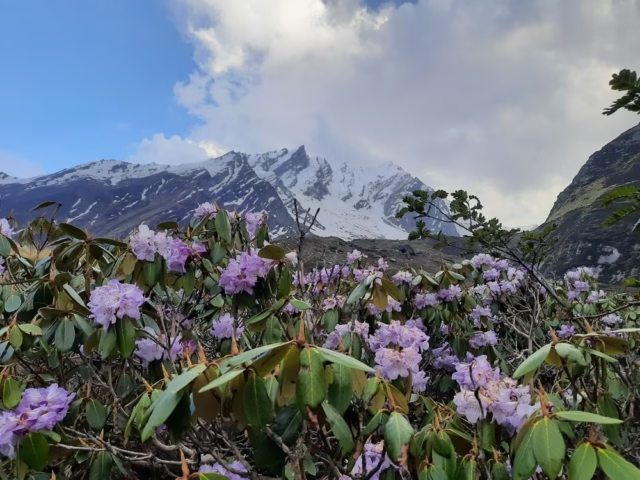Let me get straight to the point—if you’re planning to do the Bali Pass Trek, the window is tight, and the conditions can make or break your experience. I’ve done it, seen others struggle, and learned a lot from my own journey. So here’s exactly what you need to know about the best time to hit the trail, based on personal experience, not just hearsay.
Why Timing Matters for Bali Pass Trek
The Bali Pass Trek isn’t your average weekend hike. At 16,207 ft, it’s brutal, raw, and stunning all at once. But it’s also unforgiving if you pick the wrong time to go.
“How hard could it be?” I asked myself when I first heard about it. I trained a bit, packed smart, and went in early June—thankfully, the timing was nearly perfect. But just a week before, the trail was still under snow. I met trekkers who turned back due to bad weather just days before I started.
The route climbs steeply from the lush green of Sankri to alpine meadows, and finally into icy, high-altitude terrain near the pass. The weather shifts dramatically across those zones, and if you don’t time it right, you’ll be stuck in snowfields or slippery descents.
Best Season: May to Mid-June & September to Mid-October
If you want a real shot at reaching the pass safely and soaking in the views, these are your windows:
May to Mid-June
This is when I did the trek, and it’s ideal if you want some snow on the trail without being snowed in. Here’s what stood out:
- The snowfields near the pass were still intact but manageable with good gear.
- Wildflowers were everywhere below 12,000 ft.
- The nights were cold but bearable with the right sleeping bag.
- The trail was uncrowded—no bottlenecks at campsites.
However, some river crossings were still intense due to melting snow. Our guide knew safer alternate routes—without him, I’d have probably gotten stuck or soaked.
September to Mid-October
I haven’t done it in fall, but those I met who had swear by it. The snow is mostly gone, the skies are crisp and clear, and the risk of monsoon damage is low. It’s a little drier than spring but far more stable.
Here’s what they told me:
- It’s safer to trek without snow gear.
- The trail is clearer and more defined.
- The lower forest’s autumn foliage is breathtaking.
One downside? Nights can get really cold. If you’re not used to camping in sub-zero temperatures, it’s going to be tough—but not impossible.
Months You Should Avoid
I get it, sometimes people are tempted to go “off-season” to avoid crowds or get cheaper packages. I’ll tell you straight—don’t.
December to March
Heavy snow, closed trails, avalanche risk. Even if you’re an experienced trekker, most companies won’t guide you during this time. It’s simply unsafe. The pass itself is pretty much inaccessible.
July to August
Monsoon. Slippery trails, landslides, leeches, and zero views. I heard stories of soaked gear, flooded tents, and people turning back halfway. Not worth it.
What I Learned on the Trail (So You Don’t Repeat My Mistakes)
Let me keep this real. I wish someone had told me the following five things before I left:
- Acclimatization matters more than fitness. I’m relatively fit, but I felt the altitude. A guy in our group didn’t follow proper acclimatization and had to descend.
- Weather changes in minutes. It was sunny during breakfast and then a whiteout near the pass in just 2 hours. We waited it out for an extra day at Upper Dhamni.
- Don’t overpack. I brought too much camera gear and regretted it every time we climbed steep sections. Essentials only.
- Stream crossings are no joke. In May, melting snow feeds these streams and they become wide and fast. Without a guide, it’s risky.
- Local guides know their stuff. I went for Bali Pass Trek with a group organized by a company called The Searching Souls, and I can’t recommend them enough. Not because they asked me to—but because they literally got me through some tricky sections with patience and precision. They weren’t pushy, just experienced and genuinely helpful.
Final Thoughts: Trust the Mountain, Respect the Season
If there’s one thing I took away from the Bali Pass Trek, it’s that nature doesn’t care about your itinerary. You’re on its time, not yours. Choose your window wisely—May to mid-June or September to mid-October—and you’ll be rewarded with views that hit you like a gut punch in the best way possible.
I still remember standing on the pass, clouds clearing just enough to see Swargarohini and Black Peak. The preparation, the training, and the chilly evenings were all well worth it.
Just don’t wing it. Talk to someone who’s been there. And if you’re unsure, reach out to someone like The Searching Souls—they’re low-key, no-nonsense, and serious about safety without making it feel like boot camp.
Trek smart, go prepared, and let the mountains do the rest.







